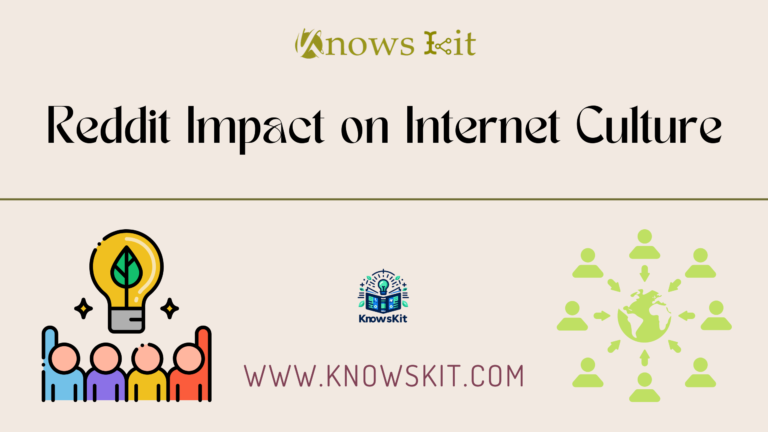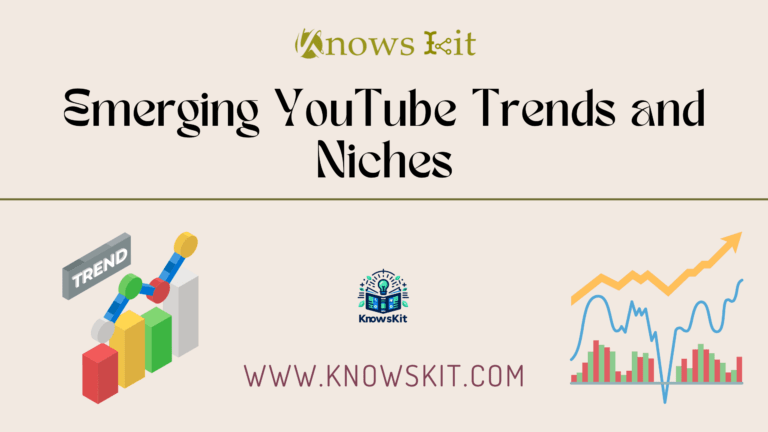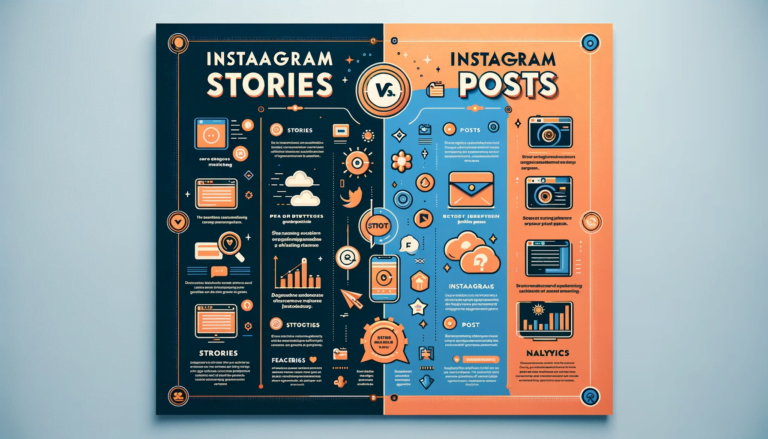Introduction
In the vibrant world of social media, banners act like the billboards of the digital highway. They are not just mere images at the top of your profile; they are powerful tools that can shape the first impression of your brand or personality. As David Ogilvy, a renowned advertising tycoon, once said, “You have to grab attention in the wink of an eye.” Social media banners do precisely that – they seize attention, set the tone, and tell your story at a glance.
Understanding Social Media Banners
![Mastering Social Media Banners[2024 Exquisite Guide] 2 Social Media Banners :Professional and clean Facebook social media banner with modern design elements reflecting corporate branding.](https://www.knowskit.com/wp-content/uploads/2024/01/professional-facebook-banner-for-corporate-branding-1024x585.png)
What are Social Media Banners?
Social media banners are the large, eye-catching images displayed prominently at the top of your social media profiles. Think of them as the cover page of your digital book – the first thing people see when they visit your profile. Each social media platform, be it Facebook, Twitter, LinkedIn, or Instagram, offers unique dimensions and opportunities for banner displays, making it crucial to tailor your design for each one.
The Role of Banners in Social Media Presence
Banners hold immense power in social media marketing. They are not just decorative elements but strategic tools that enhance brand recognition and user engagement. A Missouri University of Science and Technology study found that users form a first impression in less than two-tenths of a second. That’s where a well-designed banner comes in, conveying your brand’s essence swiftly and effectively.
Table: Comparative Analysis of Banner Strategies across Platforms
| Platform | Optimal Size | Key Features |
|---|---|---|
| 820 x 312 px | Large, visible on all devices | |
| 1500 x 500 px | Wide, panoramic style | |
| 1584 x 396 px | Professional, business-focused | |
| Varied | Story highlights, creative visuals |
Designing Effective Social Media Banners
![Mastering Social Media Banners[2024 Exquisite Guide] 3 Vibrant and dynamic social media banner for Instagram, appealing to a younger audience with bold colors and engaging visuals.](https://www.knowskit.com/wp-content/uploads/2024/01/vibrant-instagram-banner-for-youthful-appeal-1024x585.png)
Key Elements of a Captivating Social Media Banner
The art of designing a social media banner lies in striking the right balance between aesthetics and functionality. Here are the key elements to consider:
- Color: Color psychology plays a crucial role in banner design. Choose colors that reflect your brand’s personality and evoke the desired emotional response.
- Typography: The font should be legible and align with your brand’s tone. Remember, your banner text needs to be readable even on smaller screens.
- Imagery: High-quality, relevant images can communicate your message faster than words. Whether it’s a brand logo, a product shot, or an abstract design, ensure it resonates with your audience.
Tools and Resources for Banner Creation
Fortunately, you don’t need to be a professional designer to create stunning banners. Here’s a list of user-friendly tools:
- Canva: Known for its simplicity and vast template library.
- Adobe Spark: Offers more creative control for those with a bit of design experience.
- PicMonkey: Great for those who want to add artistic touches to their banners.
Guide to Using Design Tools:
- Choose a template that aligns with your brand identity.
- Customize the template with your colors, images, and text.
- Always preview the banner on different devices before finalizing.
Banner Content Strategy
![Mastering Social Media Banners[2024 Exquisite Guide] 4 Sophisticated LinkedIn social media banner with a professional, business-focused design incorporating a sleek corporate logo.](https://www.knowskit.com/wp-content/uploads/2024/01/sophisticated-linkedin-banner-for-business-professionals-1024x585.png)
Crafting the Perfect Message
The content of your social media banner must be as impactful as its design. Here’s how to ensure your banner’s message is spot-on:
- Visual-Text Balance: Your banner should be a harmonious blend of visuals and text. The imagery attracts, while the text conveys your message. Ensure the text doesn’t overshadow the visual appeal.
- Persuasive Language: Use compelling language that speaks directly to your audience. A call-to-action (CTA) can be particularly effective, prompting viewers to engage further with your brand.
Tailoring Your Banner to Your Target Audience
Understanding your audience is key to effective banner design. Consider these points:
- Demographic Insights: Age, location, interests – these factors influence how your audience perceives your banner. A banner for a youthful, trendy audience will differ vastly from one aimed at corporate professionals.
- Design Adjustments: Based on your audience analysis, tweak your banner design to better resonate with them. For instance, a younger audience might prefer bold, vibrant colors, while a more mature demographic might appreciate subtler hues and sophisticated designs.
Technical Aspects of Social Media Banners
![Mastering Social Media Banners[2024 Exquisite Guide] 5 Engaging Twitter social media banner with a wide, panoramic style suitable for a diverse audience.](https://www.knowskit.com/wp-content/uploads/2024/01/captivating-twitter-banner-with-panoramic-style-1024x585.png)
Size and Resolution Guidelines
Getting the technical details right is crucial for your banner’s effectiveness. Here’s a quick guide to the ideal sizes and resolutions:
Table: Size Specifications for Various Social Media Platforms
| Platform | Recommended Size | Notes |
|---|---|---|
| 820 x 312 pixels | Ensure visibility on all devices | |
| 1500 x 500 pixels | Optimal for panoramic images | |
| 1584 x 396 pixels | Ideal for professional profiles | |
| Varied | Adjust for stories and profile highlights |
Tips for Image Quality:
- Resolution: High-resolution images prevent pixelation, especially on larger screens.
- File Size: Keep the file size manageable to ensure quick loading times.
Mobile Optimization for Banners
With the majority of social media browsing done on mobile devices, optimizing your banner for mobile viewing is non-negotiable.
- Responsive Design: Your banner should look great on both desktop and mobile. Test how it scales across different devices.
- Simplicity: On smaller screens, simplicity is key. Avoid cluttered designs that can become messy on mobile.
Best Practices and Common Mistakes
![Mastering Social Media Banners[2024 Exquisite Guide] 6 Creative and artistic personal blog banner blending modern digital design with traditional artistic elements.](https://www.knowskit.com/wp-content/uploads/2024/01/artistic-banner-for-personal-blogs-and-websites-1024x585.png)
Do’s and Don’ts of Social Media Banner Design
Creating the perfect social media banner involves understanding what works and what doesn’t. Here’s a quick rundown:
Do’s:
- Keep the design clean and focused.
- Use high-quality images and legible fonts.
- Regularly update your banner to keep it fresh and relevant.
Don’ts:
- Overcrowd with too much text or images.
- Use low-resolution images.
- Neglect the banner’s alignment with your overall branding.
Analyzing and Improving Your Banner’s Performance
Your banner’s job isn’t done after it’s posted. Monitoring its performance is key:
- Metrics to Track: Engagement rates, click-throughs, and conversions can indicate your banner’s effectiveness.
- Feedback and Iteration: Use audience feedback and performance data to refine your banner design continuously.
Real-World Examples and Analysis
![Mastering Social Media Banners[2024 Exquisite Guide] 7 Minimalistic and elegant lifestyle brand social media banner with clean lines and a sophisticated neutral color scheme.](https://www.knowskit.com/wp-content/uploads/2024/01/elegant-banner-for-lifestyle-brands-1024x585.png)
Case Studies of Effective Social Media Banners
Learning from real-life examples is invaluable. Let’s delve into a few case studies of brands that have nailed their social media banner designs:
- Brand A: Known for its minimalist design, it uses clean lines and a monochromatic color scheme. Their banner features a simple yet powerful slogan that resonates with their audience.
- Brand B: This company uses vibrant colors and dynamic images to showcase its youthful energy. Their banner effectively communicates the brand’s spirit and engagement strategy.
These case studies highlight the importance of aligning your banner with your brand’s personality and message.
What We Can Learn from Failed Banners
Analyzing less successful banners is equally important. Common issues include cluttered design, irrelevant imagery, and unclear messaging. These examples teach us the importance of clarity, relevance, and audience alignment in banner design.
Conclusion
In the fast-paced world of social media, your banner is more than just a decorative header. It’s a strategic tool that can significantly impact your online presence. By understanding the importance of design elements, staying aware of technical requirements, and continuously analyzing and improving your banner’s performance, you can create a banner that not only captures attention but also encapsulates your brand’s essence. Remember, a great social media banner isn’t just seen; it’s remembered.
FAQ
What is the ideal size for a Facebook banner?
Ideal Size for Facebook Banners
Optimal Dimensions: The recommended size for a Facebook banner is 820 x 312 pixels. This ensures clear visibility across different devices, including desktop and mobile.
How often should I update my social media banner?
Updating Social Media Banners
Frequency of Updates: Updating your banner every 2-3 months or to align with specific marketing campaigns, seasonal events, or brand updates is ideal. Regular updates keep your profile engaging and relevant.
Can I use the same banner across different social media platforms?
Using the Same Banner Across Platforms
Customization is Key: It’s advisable to tailor banners for each platform due to their unique size requirements. Customizing ensures your banner looks its best on platforms like Facebook, Twitter, LinkedIn, and Instagram.
What’s the most important element of a social media banner?
Most Crucial Element in Banner Design
Brand Representation: The balance of imagery and text is essential, but the most crucial aspect is that your banner accurately represents your brand’s identity and core message.
How can I make sure my banner is mobile-friendly?
Ensuring Mobile-Friendly Banners
Simplicity and Testing: To make your banner mobile-friendly, focus on a simple design and test it on various devices. This ensures that the banner remains clear and legible on smaller screens.
What tools can I use to design a social media banner?
Tools for Designing Social Media Banners
Recommended Tools: For those without professional design experience, platforms like Canva, Adobe Spark, and PicMonkey offer user-friendly interfaces and a wide range of templates and design elements.
Is it necessary to include a call-to-action in my banner?
Incorporating Calls-to-Action (CTAs)
CTA Significance: Including a call-to-action in your banner can be highly beneficial. It guides the audience towards desired actions such as visiting a website, signing up, or making a contact inquiry. It’s a strategic way to increase engagement and conversion.
How do I choose the right colors for my banner?
Choosing Colors for Banners
Color Psychology: Select colors that align with your brand’s personality. Utilize your brand’s existing color palette to maintain consistency and leverage color psychology to evoke the right emotions in your audience.
What are common mistakes to avoid in banner design?
Common Banner Design Mistakes
Avoidable Pitfalls: Common mistakes include overcrowding the banner with too much text or images, using low-resolution photos, and a lack of consistency with your overall branding. These errors can detract from the banner’s effectiveness and professionalism.
Can my social media banner affect my brand’s SEO?
Impact of Banners on SEO
Indirect SEO Benefits: While social media banners don’t directly affect SEO, a well-designed, engaging banner can lead to increased user interaction and time spent on your profile, indirectly supporting your SEO strategy by signaling quality content and user engagement.
Read For More Information:-
https://ieeexplore.ieee.org/abstract/document/8056577
https://journals.sagepub.com/doi/abs/10.1016/j.intmar.2012.01.003
https://link.springer.com/chapter/10.1007/978-3-8349-4291-3_12

![Mastering Social Media Banners[2024 Exquisite Guide] 1 Creative and artistic personal blog banner blending modern digital design with traditional artistic elements.](https://www.knowskit.com/wp-content/uploads/2024/01/artistic-banner-for-personal-blogs-and-websites.png)





